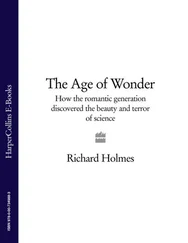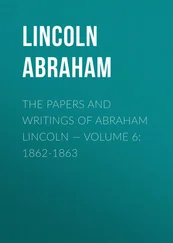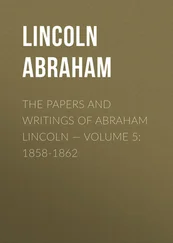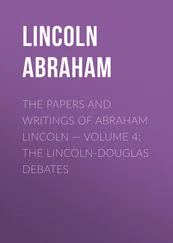Peninsular Indian kings, sultans as well as rajas, generally patronised Arab traders, as these traders contributed to the prosperity of their kingdoms, and because the kings were dependant on Arabs for the regular supply of horses, a perennial military requirement of most Indian kings. Arab traders enjoyed virtual autonomy in Kerala, as the local rulers there allowed them to live there under their own laws, and to have their own governors to regulate their lives and to punish their criminals, without any reference to the raja. According to Barbosa, fresh batches of Arab merchants arrived in Kerala periodically, and they were favoured by the local raja by assigning to each of them attendants like bodyguards, accountants and brokers, to help them in their local transactions. Many of these merchants settled in Kerala, married local women, and they and their descendants, called Mapilas, in time became a notable element in the local population.
Arabs dominated the Arabian Sea trade for several centuries, till the early sixteenth century, when the Portuguese wrested control from them. The Portuguese had arrived on the scene at the close of the fifteenth century, and soon they became absolute masters of the seas around India, because of their superior naval capabilities. Presently they built their fortified settlements on the eastern and western coasts of peninsular India, with Goa as their chief centre, and thus entrenched themselves on land in India, to backup their dominant naval presence in the Indian seas.
The Portuguese then considered the Indian Ocean as their sovereign territory, and controlled all the traffic there by laying down the rule that the ships of all other nations sailing there, particularly in the Arabian Sea, should do so only by calling at a Portuguese port in the region, to pay duty on their cargo and to obtain a pass for their safe journey. And they decreed that no ship plying in the Arabian Sea should carry certain items, especially spices and ammunitions, which they considered as their monopoly. They also required that merchantmen should sail in small convoys, and under the escort of Portuguese warships. This hegemony of the Portuguese in the Indian seas lasted for about a century, but they were eventually, in the early decades of the seventeenth century, displaced by other European powers, particularly the British.
BY THE SIXTEENTH century the port cities of peninsular India emerged as the most prominent foreign trade centres in the subcontinent, displacing the cities in north-western India which had dominated this trade for many centuries. This change was because foreign trade, which had been mostly by land route previously, was now mostly by sea route, and the peninsular ports were ideally situated to serve both eastern and western sea traders.
There is a good amount of information about the trade activities in peninsular India at this time, because the region was then visited by very many foreign traders and travellers, and several of them maintained records of what they observed. In particular, the Kerala coast, which was studded with several natural harbours, was abuzz with commercial activity at this time. Kozhikode (Calicut, in north Kerala) and Kollam (Quilon, in south Kerala), according to Battuta, were among the best ports he had seen anywhere in the world, and were equal to Alexandria. ‘It has fine bazaars, and its merchants … are immensely wealthy,’ writes Battuta about Kollam. ‘A single merchant will buy a vessel with all that is in it and load it with goods from his own house. There is a colony of Muslim merchants there; the cathedral mosque there is a magnificent building. This city is the nearest of the Mulaybar (Malabar: Kerala) towns to China, and it is to it that most of the merchants [from China] come.’ Kollam was the main centre for the transhipment of East Asian goods to the West, and of European goods to the East.
This trade prominence of Kollam was rivalled by Kozhikode, but the town seems to have gained importance only around the fourteenth century, for Marco Polo, who visited Kerala in the thirteenth century, does not mention it at all. But by the next century the town emerged into great prominence, and became renowned as the City of Spices. Battuta, who was in Kerala in the mid-fourteenth century, found the town flourishing. ‘Qaliqut,’ he writes, ‘is one of the chief ports in Mulaybar and one of the largest harbours in the world. It is visited by men from China, Sumatra, Ceylon, the Maldives, Yemen and Fars (Persia), and in it gather merchants from all quarters.’
Razzak also is all praise for the prosperity of Kozhikode, and its good government. The city, he reports, ‘brings together merchants of every city and every country … It is the practice at other ports, that if any vessel be consigned to any particular port, and unfortunately by the decree of the Almighty it is driven to any other [port] than that to which it is destined, the people plunder it, on the plea that it is sent [to them] by the winds. But at Kozhikode every vessel, wherever it comes from, and whichever way it arrives, is treated like any other, and no sort of trouble is experienced by it.’
Several other Indian towns engaged in foreign trade are also mentioned in medieval texts. Khambhat (Cambay) in Gujarat is one such town, where, according to Varthema, ‘about three hundred ships of different countries come and go.’ The town was also renowned for the excellent jewellery made there. Daulatabad in Maharashtra was another famed centre for jewellery—‘the infidels of this town are merchants, dealing principally in jewels, and their wealth is enormous,’ states Battuta. The entire stretch of the Coromandel Coast was also involved in overseas trade in medieval times.
SPICES WERE WHAT medieval foreign traders mainly sought for export from India, and that gave Kerala exceptional prominence in the world trade of that age, for it was, as Battuta describes it, ‘the pepper country’. The main items exported from India in medieval times were pepper, cloves, ginger, cardamom and cinnamon; India also exported saffron, indigo, sugar, rice, tamarind, coconut and rhubarb, as well as sandalwood, brazilwood, musk, ambergris and myrobalan. Incense, precious stones, beads, and seed pearls were the other common items exported from India. Another product of India that was keenly sought by foreigners was fine cotton fabrics, manufactured in many parts of India, but which was a speciality of Bengal. Elegant leather shoes made in Sind were yet another prized item of export from India.
Because of this flourishing overseas trade a great amount of gold flowed into India in medieval times, and it remained there. ‘I have calculated that for the last 3000 years that country has not exported gold to other countries, and whatever has entered it has never come out again,’ Syrian chronicler Shahab-ud-din was once told by one of his informers. China also had an adverse trade balance with India. Consequently there was a drain of gold from China into India, and this so bothered the Chinese government that it at one time banned imports from India.
But it was not all a one-way trade for India. Just as India exported a wide variety of goods, it also imported a wide variety of goods. But the total value of its imports seems to have been far less than that of its exports. The most notable item imported into India in early medieval times was horses, several thousands of which were brought into the country every year. It was also the most expensive item that India imported, a single horse costing as much as 220 dinars! Horses were brought into North India by land through the northwestern mountain passes, and by sea into the peninsula. India also imported perfumes, coral, quicksilver, vermilion, lead, gold, silver, alum, madder, and saffron from the Middle East; and from China it imported silks, taffetas and satins, blue and white porcelain, gold, silver, copper, vermilion, quicksilver, and so on. Various spices were also imported into India from South-east Asia. The opulent lifestyle of Muslim kings and nobles in medieval India led to an exponential growth in India’s demand for imported luxury products like silks, velvets, damasks, camlets and satins. India also imported dates. In time India’s export of manufactured goods declined, while its import of such goods increased.
Читать дальше












